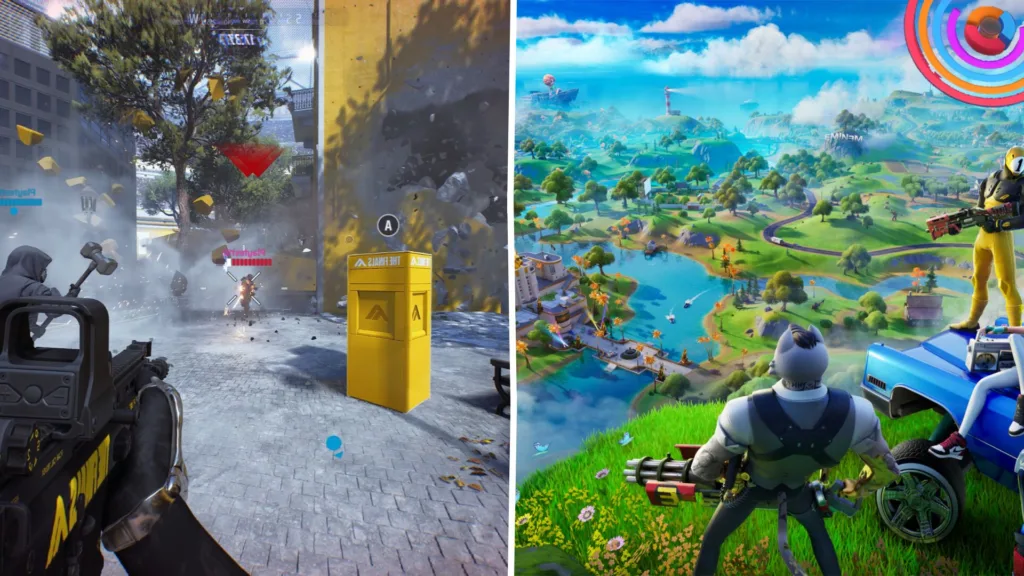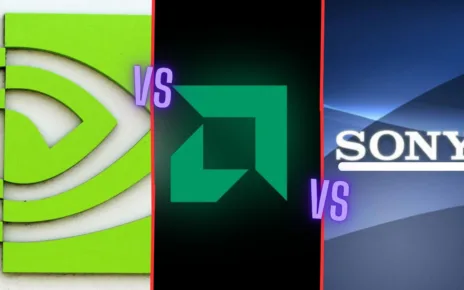Unreal Engine 5.6: Features, Release Date, and Comparisons
We’ve already seen how far technology has evolved, not only in other tasks but in game development too, such as after the release of Unreal Engine 5.5, many new and mind-blowing things were introduced, but what now? the UE5.6 is next? If yes, then what are the possible enhancements that can be made and when will it launch? Time to find out!
Unreal Engine 5.6 is shaping up to be a landmark update in game development, with Epic Games revealing its roadmap during Unreal Fest 2024 in Seattle. Here’s an in-depth look at what UE 5.6 promises, its anticipated timeline, comparisons with Unreal Engine 4’s evolution, and its standing against Unity 6.
Potential Release Date and Roadmap
Epic Games announced during Unreal Fest 2024 that Unreal Engine 5.6 is expected in mid to late 2025. The roadmap highlights major innovations aimed at broadening its capabilities for game developers, filmmakers, and more others. Key upcoming features include better integration of MegaLights, which allows real-time management of thousand of lights with minimal performance issues, and further advancements in procedural content generation. The Unreal Engine 5.6 Roadmap can be predicted by this:

Anticipated Updates and Unreal Engine’s Evolution
Epic Games has maintained a consistent update cadence with Unreal Engine 5, bringing enhancements at every step since its 2022 debut. If we compare it to Unreal Engine 4‘s history, which saw fewer but substantial updates(spanning versions 4.1 to 4.27 over eight years), Unreal 5 has already progressed to 5.5, with detailed roadmaps extending through 5.8 and beyond.
Potential changes in Unreal Engine 5.6 include:
Rendering and Lighting Enhancements
- Lumen & Virtual Shadow Maps (VSM): Real-time global illumination and shadow rendering for photorealistic environments, will be improved.
- MegaLights: Enables thousands of dynamic, shadow-casting lights, enhancing complex lighting setups for ultra-realistic scenes.

Procedural Content and AI Integration
- GPU Compute for Procedural Content: It boosts scalability in world-building and simulations, enabling more expansive, dynamic environment.
- AI-Driven Features: This includes smarter NPC behavior, automated world-building enhancements, and some skeletal animation refinements to reduce manual workload in motion capture edits.

Physics and Interactive Simulations
- Chaos Engine Updates: This will bring advanced real-time destruction physics and fluid simulations, enabling dynamic and interactive environments, if you’ve played The Finals, then you know what are we talking about.

XR and Cross-Reality Development
- Augmented and Virtual Reality Support: Enhanced compatibility for next-gen VR devices and cross-reality multiplayer, uniting AR, VR, and traditional players in shared spaces.

Competitive Gaming and Esports
- Real-Time Performance Metrics: Tools to optimize frame rates and to reduce latency, essential for competitive games.
- Enhanced Spectator Modes: Includes some dynamic camera angles and replay systems for a better audience engagement in esports.

Path Tracing for Realism
- Optimized Path Tracing: A sophisticated algorithm that mimics real-world’s light interactions, will be now refined for greater efficiency and realism in cinematics and games.

However, Unreal Engine 5.6 combines these innovations to redefine the standards of real-time 3D rendering, offering tools that cater a variety of industries, from gaming to film and beyond.
Comparison: Unreal Engine 5.6 vs. Unity 6
Unity 6, also on the horizon, is bringing competition with its robust focus on accessibility, Web3 integrations, and an improved Editor experience.
Rendering and Performance
- Unreal Engine 5.6: Features like Lumen and Nanite, offering cutting-edge lighting and mesh rendering capabilities for AAA games and cinematic production.
- Unity 6: Focuses on streamlined pipelines for indie developers, which introduces improved real-time ray tracing but lacks Unreal’s cinematic finesse.
Market Appeal
- Unreal: It is dominating high-budget game development and film industries.
- Unity: Preferred for mobile, AR/VR, and indie projects due to its lower learning curve.
Community and Licensing
- Unreal remains free until $1M in revenue, while Unity’s subscription model caters to smaller studios but introduces ongoing costs for professional-grade tools.

Overall Conclusion
Unreal Engine 5.6, set to release in mid-to-late 2025, promises groundbreaking updates such as MegaLights for some advanced lighting and expanded AI-driven tools for world-building. Announced at Unreal Fest 2024, emphasizing photorealistic rendering, enhanced XR support, and cinematic-grade tools, reinforcing its role as a leader in real-time 3D creation. The Unreal Engine 5 seems to have a bright future, releasing mind-blowing updates from time-to-time.
Hope you learned something new, Thanks for reading! here are some FAQs which might clear your doubts related to Unreal Engine 5.6:
FAQs
When will Unreal Engine 5.6 be released?
- Unreal Engine 5.6 is anticipated in Late Spring-2025, as per the Unreal Fest 2024 roadmap.
What new features can we expect in Unreal Engine 5.6?
- Highlights include advanced lighting with MegaLights, improved procedural content tools, and enhanced physics simulations.
How does Unreal Engine 5.6 compare to Unity 6?
- UE 5.6 excels in rendering and cinematic features, while Unity 6 focuses on accessibility and indie developer support.
Will Unreal Engine 5.6 improve mobile development?
- Yes, updates to mobile optimization are a focus, ensuring better performance for mobile games.
What is MegaLights in Unreal Engine?
- MegaLights is a feature allowing thousands of real-time shadow-casting lights with minimal performance impact, perfect for high-detail environments.



